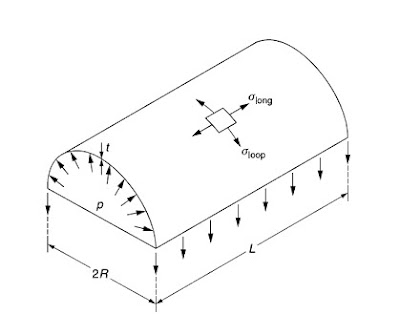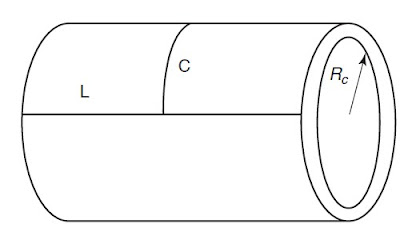Thickness Calculation for Combined loading
It is customary for most vessel designers to establish the minimum vessel shell and trend thickness according to the pressure temperature conditions and then calculate the thickness required at the bottom head seam due to bending moments imposed by wind or earthquake forces. Stresses in the longitudinal direction are involved nod the following notation may
be used to summarize the thickness required :
Here, The terms within the absolute value signs are positive for tensile stresses and negative for compressive stresses. The first term gives the thickness required for the longitudinal stress resulting from internal pressure and is positive for pressures above atmospheric and negative for pressures below atmospheric. The second term is the thickness required to resist the longitudinal bending stress and both positive and negative values exist at the same time. The third term is the thickness required for the weight of the vessel above the seam being investigated and, since this is a compressive stress, it has a negative value. The combination giving the highest value establishes the thickness required to resist the longitudinal stresses.
This formula hold good when the units are in Psi, ft & lb, if the units are in MPA, mm, N then remove the ’48’ from the formula.




Earthquake loading – Brief
All designers are accustomed to evaluating moments due to eccentric and wind loads, but there are a few who may not be familiar with the method used for estimating moments due to earthquake. Therefore, the following brief outline is presented because this method is recommended as a design procedure for vessels where dynamic considerations are required. The weight of each vessel element (shell, head, tray, or internal part) is calculated. and then multiplied by the vertical distance from the circumferential seam (or horizontal plane) under

consideration to the center of gravity of the element. The summation of the moments so found ismultiplied by the seismic factor for the area where the vessel is to operate, thereby yielding a moment due to earthquake or seismic disturbance. For vessels, the seismic factor will usually have a value of 0.03 to 0.12, depending upon the geographical location. Expressed mathematically,
Share this:
Like this: